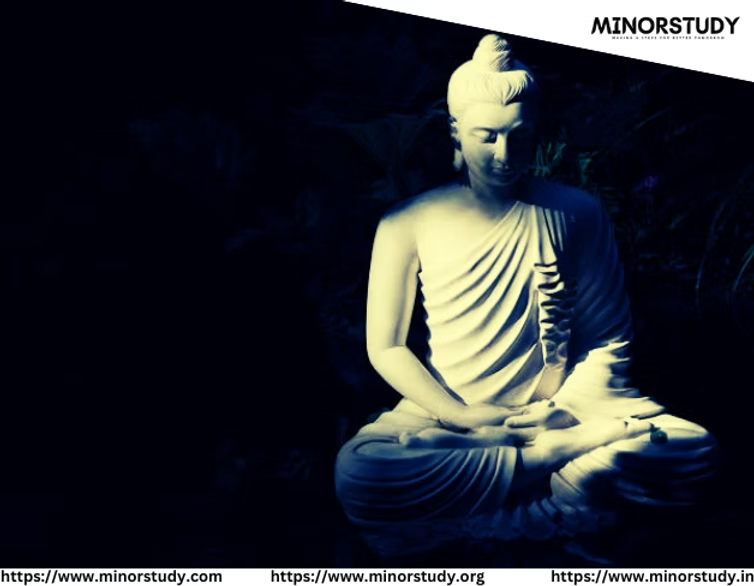Gautama Buddha: The Enlightened One
Who is Gautama Buddha?
Gautama Buddha (c. 563 BCE–c. 483 BCE) was a spiritual teacher, philosopher, and the founder of Buddhism. Born as Siddhartha Gautama in Lumbini (modern-day Nepal), he attained enlightenment and shared teachings that form the foundation of Buddhist philosophy. His life and teachings emphasize the path to liberation from suffering, inner peace, and the attainment of Nirvana.
- Key Life Events of Buddha
- Philosophy and Teachings
- 1. The Four Noble Truths
- 2. The Noble Eightfold Path
- 3. The Middle Way
- 4. The Three Universal Truths
- 5. The Five Precepts
- Significance and Legacy
- Frequently Asked Questions (FAQs)
- Key Symbols of Buddhism
- Observances and Festivals
- Key Lessons from Buddha’s Life
- Table of Key Aspects
- Conclusion
Key Life Events of Buddha
Year | Event |
563 BCE | Born as Siddhartha Gautama in Lumbini, into the Shakya clan of a royal family. |
534 BCE | Renounced his royal life at 29, seeking answers to the problem of human suffering. |
528 BCE | Attained enlightenment under the Bodhi tree in Bodh Gaya, India, at the age of 35. |
528–483 BCE | Spent 45 years teaching the Dharma, traveling across India to spread his philosophy. |
483 BCE | Passed away at the age of 80 in Kushinagar, achieving Parinirvana. |
Philosophy and Teachings
1. The Four Noble Truths
Dukkha: Life is marked by suffering.
Samudaya: There is a cause of suffering—desire and attachment.
Nirodha: Suffering can be ended by eliminating desire.
Magga: The path to the cessation of suffering is the Eightfold Path.
2. The Noble Eightfold Path
A practical guide for ethical living and mental cultivation:
Right View
Right Intention
Right Speech
Right Action
Right Livelihood
Right Effort
Right Mindfulness
Right Concentration
3. The Middle Way
The Buddha advocated a balanced approach between extreme asceticism and indulgence, emphasizing moderation.
4. The Three Universal Truths
Anicca: Impermanence—all things are transient.
Dukkha: Suffering is inherent in existence.
Anatta: Non-self—there is no permanent self or soul.
5. The Five Precepts
Moral guidelines for lay practitioners:
Refrain from harming living beings.
Refrain from stealing.
Refrain from sexual misconduct.
Refrain from lying.
Refrain from intoxicants.
Significance and Legacy
Philosophical Contributions:Buddha’s teachings on mindfulness, compassion, and impermanence have influenced countless individuals and spiritual traditions worldwide.
Foundation of Buddhism:His teachings form the cornerstone of Buddhism, which has spread across Asia and the world.
Cultural Influence:Art, architecture, and literature in Asia have been deeply inspired by his life and teachings, leading to creations like stupas, statues, and Buddhist scriptures.
Global Relevance:Mindfulness and meditation practices rooted in Buddhism have gained worldwide popularity as tools for mental health and well-being.
Frequently Asked Questions (FAQs)
What does “Buddha” mean?“Buddha” means “The Enlightened One” or “The Awakened One.”
Why did Siddhartha leave his palace?He left after witnessing suffering (old age, sickness, death) and sought a way to overcome it.
What is Nirvana?Nirvana is the state of liberation and freedom from the cycle of birth, death, and rebirth (samsara).
Is Buddhism a religion or philosophy?Buddhism is both a philosophy and a way of life. While it can be practiced religiously, it is also viewed as a practical guide to living.
Key Symbols of Buddhism
Symbol | Meaning |
Dharma Wheel | Represents the Eightfold Path and the teachings of Buddha. |
Lotus Flower | Signifies purity, enlightenment, and detachment. |
Bodhi Tree | Symbolizes the place where Buddha attained enlightenment. |
Stupa | Represents Buddha’s presence and relics. |
Observances and Festivals
Vesak (Buddha Purnima):Celebrates Buddha’s birth, enlightenment, and death.
Asalha Puja (Dhamma Day):Commemorates Buddha’s first sermon.
Parinirvana Day:Marks the Buddha’s death and entry into Nirvana.
Key Lessons from Buddha’s Life
Self-Realization:Truth and liberation lie within, not in external possessions or power.
Compassion and Nonviolence:Treat all living beings with kindness and respect.
Mindfulness:Cultivate awareness of the present moment to reduce suffering.
Moderation:Avoid extremes in lifestyle, choosing a balanced path.
Table of Key Aspects
Aspect | Details |
Birth | Born in Lumbini, Nepal (c. 563 BCE). |
Renunciation | Left royal life to seek answers to suffering. |
Enlightenment | Achieved enlightenment under the Bodhi tree in Bodh Gaya. |
Teachings | Four Noble Truths, Eightfold Path, Middle Way, Impermanence. |
Legacy | Founder of Buddhism, teachings of mindfulness, compassion, and nonviolence. |
Festivals | Vesak, Asalha Puja, Parinirvana Day. |
Conclusion
Gautama Buddha life and teachings continue to resonate across cultures and generations, offering profound insights into the human condition and the path to inner peace. His legacy as a teacher of mindfulness, compassion, and wisdom remains as relevant today as it was 2,500 years ago, inspiring millions on their spiritual journeys.








